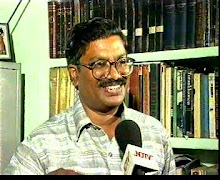
Process of weaving now
WEAVING. The process of weaving consists in interlacing, at right angles, two or more series of flexible materials, of which the longitudinal are called warp and the transverse weft. Weaving, therefore, only embraces one section of the textile industry, for felted, plaited, netted, hosiery and lace fabrics lie outside this definition. Felting consists in bringing masses of loose fibres, such as wool and hair, under the combined influences of heat, moisture and friction, when they become firmly inter – locked in every direction. Plaited fabrics have only one series of threads interlaced, and those at other than right angles. In nets all threads are held in their appointed places by knots, which are tied wherever one thread intersects another. Hosiery fabrics, whether made from one or many threads, are held together by intersecting a series of loops; while lace fabrics are formed by passing one set of threads between and round small groups of a second set of threads, instead of moving them from side to side. Notwithstanding the foregoing limitations, woven fabrics are varied in texture and have an enormous range of application. The demands made by prehistoric man for fabrics designed for clothing and shelter were few and simple, and these were fashioned by interlacing strips of fibrous material and grasses, which in their natural condition were long enough for the purpose in hand. But, as he passed from a state of savagery into a civilized being, his needs developed with his culture, and those needs are still extending. It no longer suffices to minister to individual necessities; luxury, commerce and numerous industries must also be considered.
The invention of spinning gave a great impetus to the introduction of varied effects previously; the use of multicoloured threads provided ornament for simple structures, but the demand for variety extended far beyond the limits of colour, and different materials were employed either separately or conjointly, together with different schemes of interlacing. Eventually the weaver was called upon to furnish articles possessing lustre, softness and delicacy; or those that combine strength and durability with diverse colourings, with a snowy whiteness, or with elaborate ornamentation. In cold countries a demand arose for warm clothing, and in hot ones for cooler materials; while commerce and industry have requisitioned fabrics that vary from normal characteristics to those that exceed an inch in thickness. In order to meet these and other requirements the world has been searched for suitable raw materials. From the animal kingdom, wool, hair, fur, feathers, silk and the pinna fibre have long been procured. From the vegetable kingdom, cotton, flax, hemp, jute, ramie and a host of other less known but almost equally valuable materials are derived. Amongst minerals there are gold, silver, copper, brass, iron, glass and asbestos. In addition, strips of paper, or skin, in the plain, gilt, silvered and painted con – ditions are available as well as artificial fibres. All of the fore – going may be used alone or in combination.
The process of weaving
INDIAN BANKNOTES ANCIENT COINS,STAMPS,POSTAL HISTORY,,,numisworld@gmail.com I exchange indian banknotes,modern ancient COINS,BANKNOTES,STAMPS,world,india,british india,bank notes,COINS STAMPS,FDC all in THEMES;Modern WORLD COINS,ANCIENT COINS FROM ALEXANDER PERIOD, BIMETAL,SHAPES OF COINS, FAMOUS THEMES;UNRECOGNIZED NEW NATIONS,COUNTRY SETS,world postal history from 1840,kings documents,ETC see blogs for info ok.please pass on info about me and my blog OK,NOTE:Please send notes ONLY BY registered post,OKM.DAMODHARBlockNo30,1floor,SanjevayyaNagarcolony,WestMarredpallysecunderabad;500026 INDIA

No comments:
Post a Comment